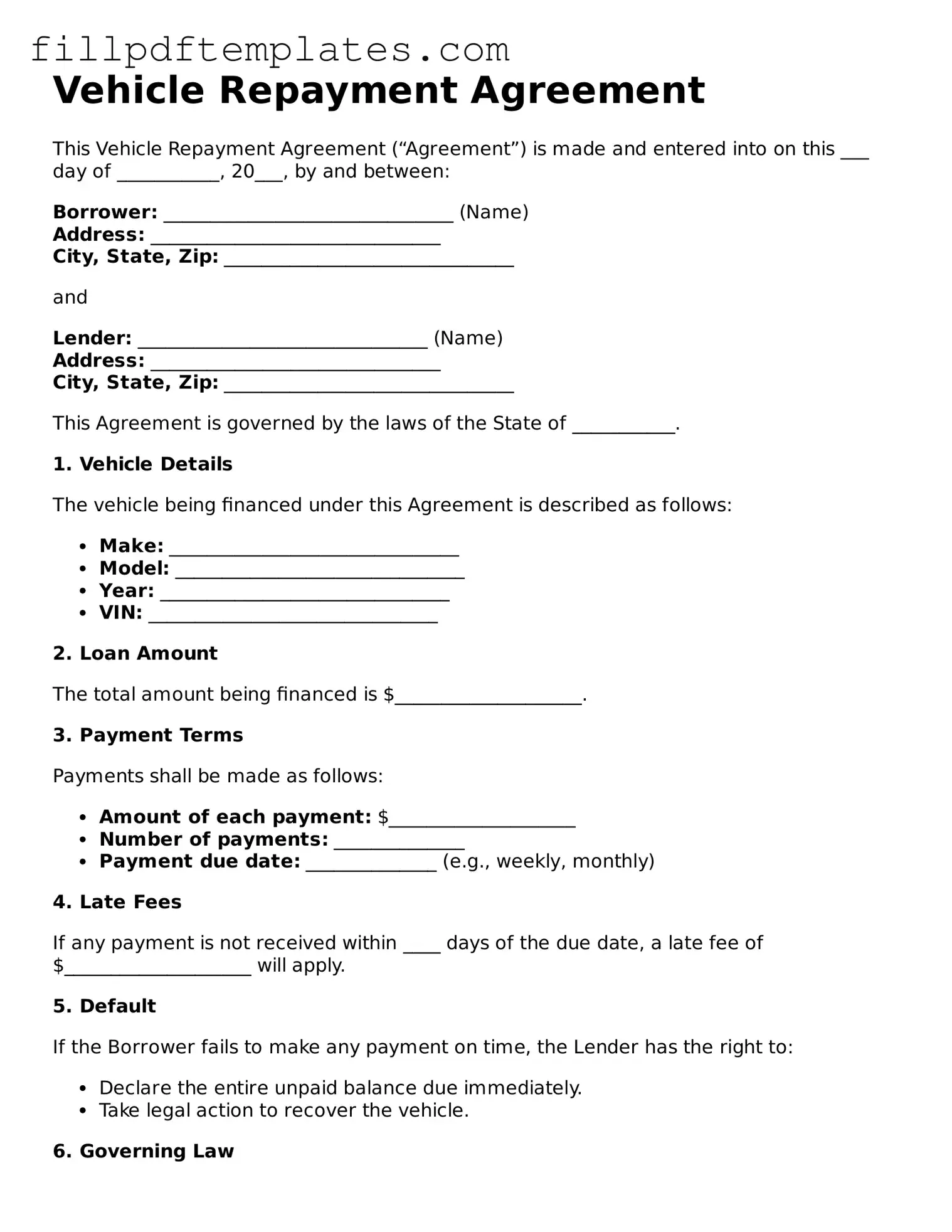Vehicle Repayment Agreement
This Vehicle Repayment Agreement (“Agreement”) is made and entered into on this ___ day of ___________, 20___, by and between:
Borrower: _______________________________ (Name)
Address: _______________________________
City, State, Zip: _______________________________
and
Lender: _______________________________ (Name)
Address: _______________________________
City, State, Zip: _______________________________
This Agreement is governed by the laws of the State of ___________.
1. Vehicle Details
The vehicle being financed under this Agreement is described as follows:
- Make: _______________________________
- Model: _______________________________
- Year: _______________________________
- VIN: _______________________________
2. Loan Amount
The total amount being financed is $____________________.
3. Payment Terms
Payments shall be made as follows:
- Amount of each payment: $____________________
- Number of payments: ______________
- Payment due date: ______________ (e.g., weekly, monthly)
4. Late Fees
If any payment is not received within ____ days of the due date, a late fee of $____________________ will apply.
5. Default
If the Borrower fails to make any payment on time, the Lender has the right to:
- Declare the entire unpaid balance due immediately.
- Take legal action to recover the vehicle.
6. Governing Law
This Agreement shall be governed by the laws of the State of ___________.
By signing below, both parties agree to the terms outlined in this Vehicle Repayment Agreement.
Borrower Signature: ___________________________
Date: ________________
Lender Signature: ___________________________
Date: ________________
